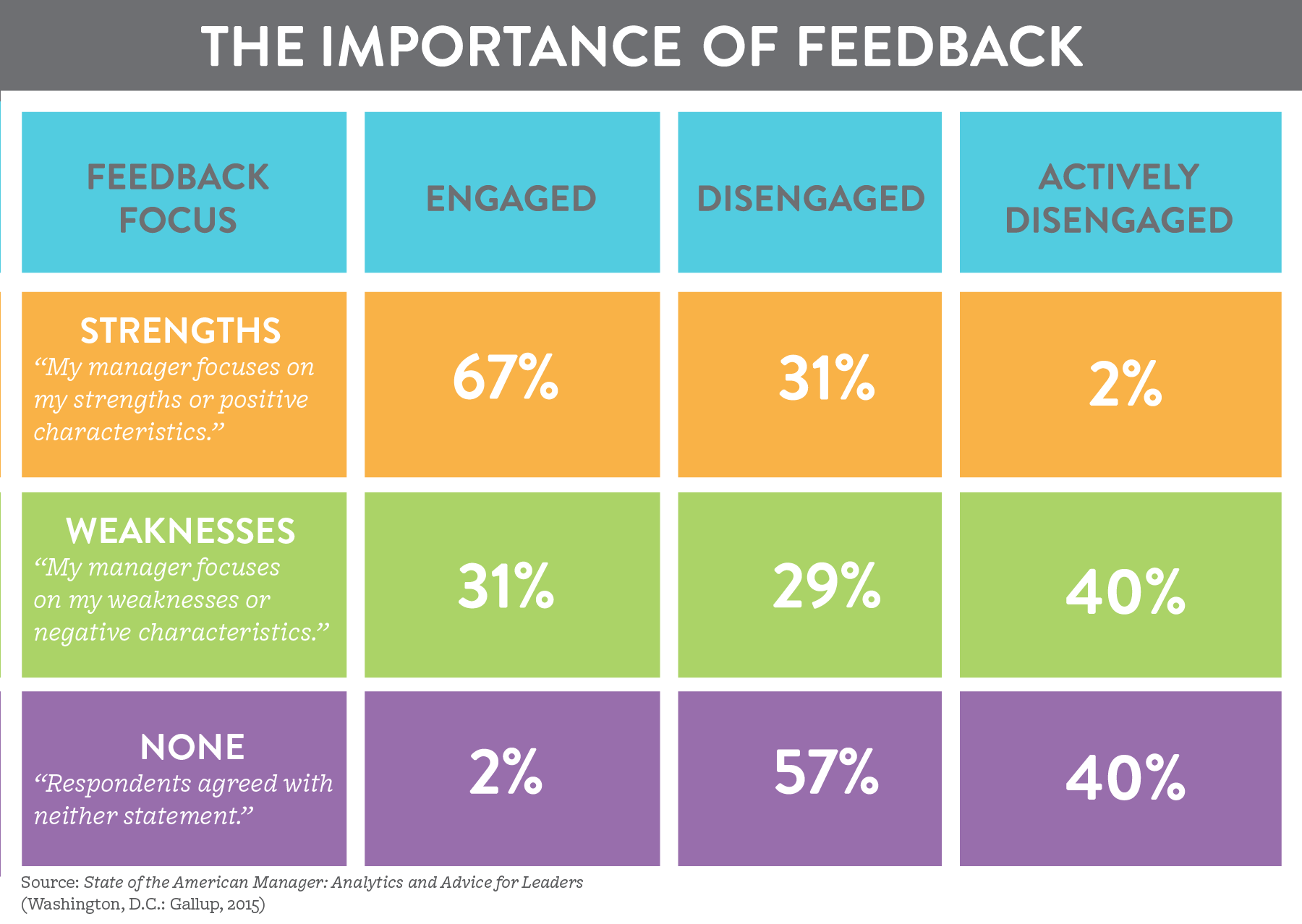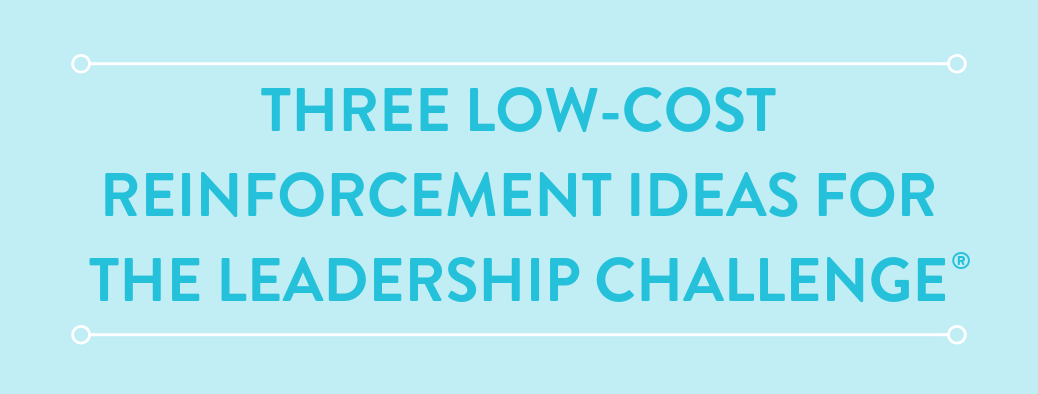
Focusing feedback on strengths provides a huge bump in engagement
As evidenced by Gallup (the research reflected in this table above), almost 7 in 10 employees (67%) who strongly agree that their manager focuses on their strengths, or positive characteristics, are engaged.
In a Gallup report, the State of the American Workplace, released in February 2017, Gallup identified that 33.3% of U.S. employees are engaged at work. Focusing feedback on strengths provides a huge bump in engagement! (Once we take a closer look unpacking these numbers, I’ll give you three quick-start ideas for engaging employees.)
These latest findings indicate that nearly 70% of American workers are “not engaged,” or are “actively disengaged.” This means they are emotionally disconnected from their workplaces and less likely to be productive. In fact, “actively disengaged” employees are defined by intentionally looking for ways to sabotage the organization, through gossiping, sharing information about the organization outside the organization, etc.
When employees strongly disagree with the statement about strengths, the percentage of workers who are engaged in their work spirals down to 2%. But what's even more interesting is when managers provide no feedback. Past studies have revealed this even bigger story.
Check out the last row. What happens when no feedback is provided? Clearly, we see an even bigger plummet in engagement and, even more concerning, a higher level of active disengagement. The message here? ANY feedback is better than NO feedback.
So, here’s an easy fix: talk to your employees. Let them know how they are doing, and engagement will rise.
In our leadership development work, this skill—this challenge—typically comes up as one of the biggest roadblocks for leaders when managing their people. Sometimes the leaders aren't even aware they aren't providing feedback until they receive a 360-degree feedback report, and we see striking differences between the frequency with which managers believe they are providing feedback and how often their people see it. But it's not as simple as saying, "I'll just do it more.” Unless there is intentionality around providing more feedback, the likelihood that others will see a marked improvement will be slim.
So how DO managers make that happen? Here are some thoughts to plan your feedback:
3 TIPS FOR BUMPING UP ENGAGEMENT NOW
- Schedule regular time for one-on-one feedback. A recent study from Google, in which they effectively created an eight-point plan to help managers improve, determined the Eight Habits of Highly Effective Google Managers. Basically it came down to addressing the desire for employees to have regularly-scheduled one-on-one meetings with their manager. Not just to share updates on what is happening in their work, but also to discuss what is happening in their performance. Intentional feedback—the good, the bad, the ugly. Employees want it and crave it.
- Give “just-in-time” feedback. We think we're doing it, but we're not. When I managed a large retail store, I thought I was giving the good and the bad. But it turns out that leaders are wired to find and solve problems, so my feedback was focused on what needed to be fixed. That’s not performance feedback. I needed to change that, and I did so by being intentional about providing positive feedback and not only sandwiching it into the "problem-solving" feedback. I put 10 paper clips in my right suit pocket every day, with the intent of getting them all into my left pocket by the end of the day—by finding the good work that was happening every day and letting people know I saw it. Eventually, I didn't need the paper clips.
- Increase your positive-to-negative ratio. We know that focusing on strengths exponentially increases feedback. So let's do it! According to Tom Rath in his book How Full Is Your Bucket, we should provide three positive pieces of feedback for every one negative. Not easy, as we see problems that need to be fixed. What is your PNR (Positive-to-Negative Ratio)? What was it yesterday? How can you increase it today? What can you do to increase it?
Whether you use paper clips or sticky notes or hash marks on a white board, be intentional about providing feedback. Your engagement levels depend on it!
* Gallup defines engaged employees as those who are involved in, enthusiastic about, and committed to their work and workplace. Through Gallup Daily tracking, Gallup categorizes workers as "engaged" based on their responses to key workplace elements it has found predict important organizational performance outcomes.












